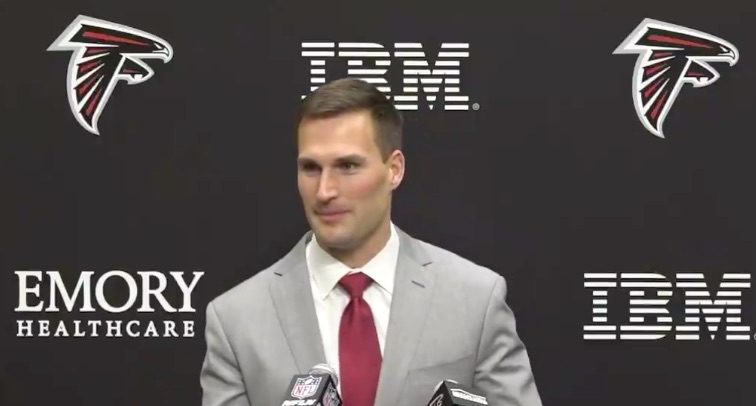Few NCAA Tournament Cinderella stories have been more captivating than Florida Gulf Coast in 2013.
In year six as a Division I program, the little-known Eagles made it to March Madness as a 15-seed, then took off like a rocket. They ran past Georgetown (a loss the Hoyas may still be recovering from) and then upset San Diego State, too. The small school from Fort Myers, Fla. was the first 15-seed to make it to the tournament’s second weekend.
FGCU would lose to the state power Florida Gators in the Sweet 16, but the genie was out of the bottle. “Dunk City,” the nickname reflective of that team’s high-flying style of play, was born.
Four years later, they’re a different team with a different coach. However, the Eagles are back in the NCAA Tournament (for the second straight year) and have ascended to become the resident power in the Atlantic Sun conference. FGCU wrapped up its best DI regular season to-date (26 wins) over the weekend, besting North Florida 77-61 for the program’s third conference crown in five years.
How did this happen so quickly?
It started with Dave Balza, as much as Andy Enfield gets all the credit. The program’s first coach (in 2002 in Division II) may not have gotten his footing once the Eagles moved up to DI, but he did bring in the players who created Dunk City. Sherwood Brown, Chase Fieler, Christophe Varidel – they were Balza recruits. But it did take Enfield to galvanize them.
Now the head man at USC, Enfield was a unique coach when he arrived at Florida Gulf Coast. He followed up his playing career (Johns Hopkins) with six years as an NBA assistant, then he left for success in the financial world. When he came back to coaching in 2006, he headed to Florida State as an assistant, then parlayed five years in Tallahassee into the FGCU gig. It took him two years to build a small program into a household name.
The aftermath is what has been most surprising, though.

Enfield’s successor, long-time Kansas assistant Joe Dooley, has possibly improved on the excellence he walked into.
Florida Gulf Coast managed to land a combined three top-300 recruits in the classes of 2014 and 2015. In 2015, they had one of the country’s top-100 classes. The best player on this year’s team, Brandon Goodwin, was a UCF transfer who failed to receive much hype out of high school. Now he’s averaging 18.2 points per game for a team that’s currently projected as a 14-seed, per Bracket Matrix. (Our bracketologist, Jesse Kramer, also has FGCU as a 14-seed in his latest projections.) The brand name alone likely slots them in as a hot (albeit unlikely) upset pick.
The brand recognition has extended to the rest of the university too over the last few years.
In the year after their miracle run in March, FGCU’s freshman applications surged by 35.4 percent year over year. The growth was so overwhelming that the school actively sought to scale back increased admission plans and opt for a more conservative approach.
Growth isn’t a foreign concept for Florida Gulf Coast, though. Since the school was founded in 1991, enrollment has grown from 2,000 students to over 15,000 through 2015. With a 61 percent acceptance rate, the school is now classified as “selective” by U.S. News & World Report. At least part of the influx in quantity (and quality) of applicants can be attributed to that 2013 run.
Like the school, the basketball program’s also reaped some financial reward. A 455-percent increase in athletic spending from 2009 through 2013 helped Enfield’s Dunk City run happen. That investment’s staying power (and the additional revenues that success has wrought) continue to pay off for Dooley now.
When you look at what the Eagles are working with compared to the rest of the A-Sun, this success is sustainable going forward as well.
FGCU is among the top three in the conference in terms of enrollment and top-five in endowment. Endowment doesn’t always relate directly to athletic budget, of course. But it does help, and could speak to the resources available down the road for even more growth. Its location in Fort Myers also lends an assist with a captive local market largely to itself.
But before the future, Florida Gulf Coast is dealing with what’s in front of them right now: another challenging first-round matchup with another power conference opponent.
Their odds are match-up dependent, of course. But this year’s Eagles squad presents problems for any opponent. FGCU is one of the best offensive-rebounding teams in the country, they’re proficient shot-blockers and function largely in the paint. Shutting down the three-point shot does little to stop this group. You have to be able to clog the paint (and also stop them from doing so on the other end).
Whether Dunk City repeats itself or not this March, the small school with very little basketball history has turned itself into a real program. Now we wait and see what form that takes as Florida Gulf Coast continues to develop over the course of this NCAA Tournament, and likely many more to come.








I’m picking them to make the Elite 8 at least, no matter who they play.
Great article. I remember during the first 2 rounds in 2013 they completely energized their audiences and it felt like everyone there was an FGCU fan. Some of it because they were unknown Cinderellas, but how they did it was so fun to watch.
Let’s see if they can harness even a bit of that this year to pull out a win or two.